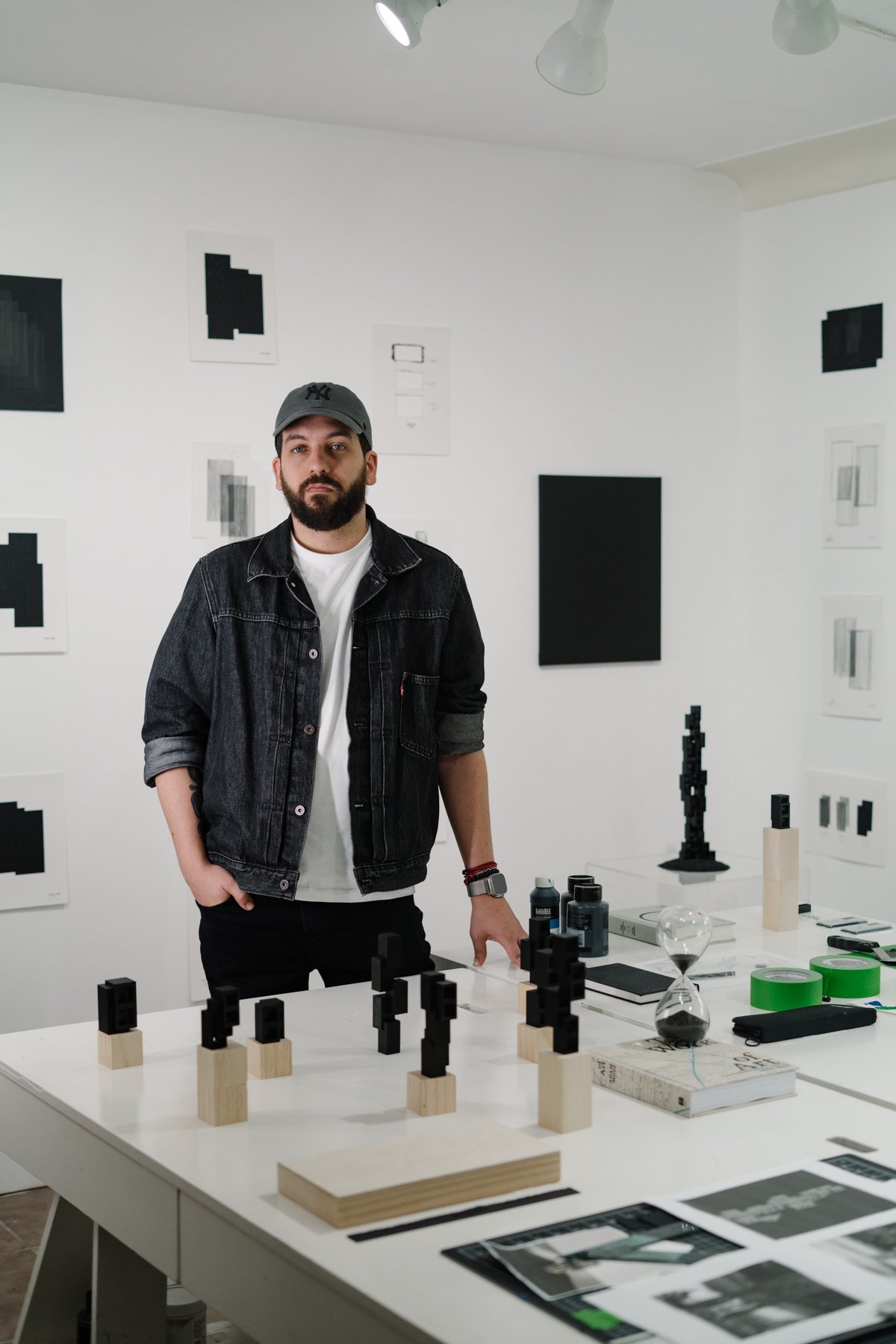January - February 2025
Guillermo Garcia Cruz
Film directed by Alexa Caravia for Fountainhead Arts
Guillermo Garcia Cruz constructs a visual language where geometric precision collides with the impermanence of the digital age. Born in Uruguay, he found himself searching for an artistic identity within a nation not often associated with the deep historical narratives of pre-Columbian civilizations that shape much of Latin American art. Instead, he turned to Uruguay’s most significant artistic contribution, Universal Constructivism, as pioneered by Joaquín Torres-García. Yet, rather than homage, Cruz extends the lineage of this movement into the present, merging its formal rigor with the ephemeral nature of contemporary digital experience
At the core of his practice is a meditation on the mediation of our reality, specifically reimagining the way technology refracts and distorts our lives. His vertical compositions, stark in their geometric clarity, recall the ubiquitous screens through which modern life is filtered. Glitches, breaks, and shifts in repetition punctuate his paintings, evoking the unstable rhythm of digital existence. His palette, grounded in black, reflects the totality of pigment yet the absence of light. This is complemented by an embracing of RGB configurations. They act as not only a reference to the pixelated building blocks of the virtual world but also the proliferation of primary colors found in the work of other historic geometric artists like Piet Mondrian. This synthesis of minimalism and digital symbolism places Cruz at the intersection of structure, perception, and technology.
In constructing his own artistic practice, he found the need to leave Uruguay. In doing so, he found its essence, discovering new ways of bridging the past and present, between physical presence and digital ether. Through his residency, this act of uncovering identity takes one step further. In the forced calm of the studio, he was presented with the opportunity to reflect and experiment amidst a time of professional pressures and prolific creation. With a newfound sense of distance, he could see his own artistic heritage with new clarity. Enveloped in outsider perspectives, he could see new ways of challenging the monolithic portrayals of Latin American culture, analyzing how his practice is viewed and can change the conversation of art in Uruguay today. With new sketches and work on the horizon, Cruz navigates the glitches, embraces the flux, and sees new abstractions that echo a rapidly shifting reality.
Words by Charles Moore






